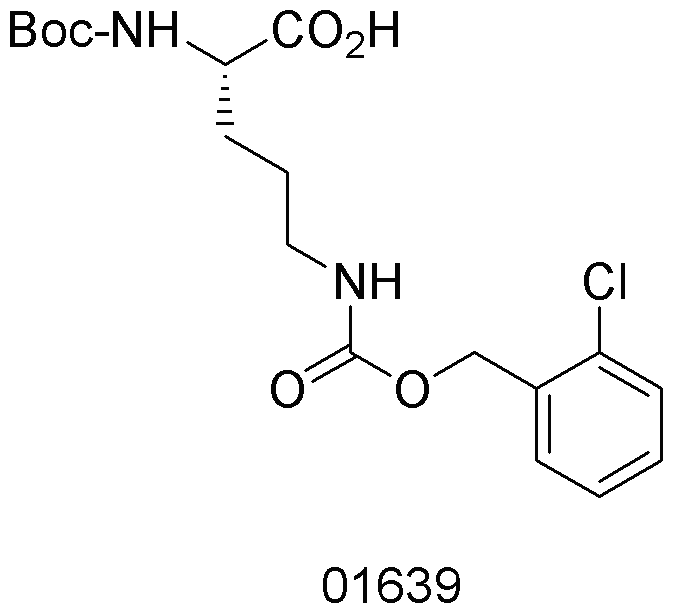Na-Boc-Nd-2-chloro-Z-L-ornithine is widely utilized in research focused on:
- Peptide Synthesis: This compound serves as a key building block in the synthesis of peptides, particularly in the development of therapeutic agents targeting various diseases.
- Drug Development: It plays a significant role in medicinal chemistry, where it is used to create new drug candidates with improved efficacy and reduced side effects.
- Biochemical Research: Researchers utilize it to study protein interactions and enzyme activities, providing insights into biological processes and disease mechanisms.
- Targeted Delivery Systems: The compound is incorporated into drug delivery systems, enhancing the specificity and effectiveness of treatments by targeting specific cells or tissues.
- Analytical Chemistry: It is employed as a standard in various analytical methods, helping to ensure the accuracy and reliability of experimental results.
Informations générales
Propriétés
Sécurité et réglementation
Applications
Na-Boc-Nd-2-chloro-Z-L-ornithine is widely utilized in research focused on:
- Peptide Synthesis: This compound serves as a key building block in the synthesis of peptides, particularly in the development of therapeutic agents targeting various diseases.
- Drug Development: It plays a significant role in medicinal chemistry, where it is used to create new drug candidates with improved efficacy and reduced side effects.
- Biochemical Research: Researchers utilize it to study protein interactions and enzyme activities, providing insights into biological processes and disease mechanisms.
- Targeted Delivery Systems: The compound is incorporated into drug delivery systems, enhancing the specificity and effectiveness of treatments by targeting specific cells or tissues.
- Analytical Chemistry: It is employed as a standard in various analytical methods, helping to ensure the accuracy and reliability of experimental results.
Documents
Fiches de données de sécurité (FDS)
La FDS fournit des informations de sécurité complètes sur la manipulation, le stockage et l’élimination du produit.
Spécifications du produit (PS)
Le PS fournit une description complète des propriétés du produit, notamment sa composition chimique, son état physique, sa pureté et les exigences de stockage. Il détaille également les plages de qualité acceptables et les applications prévues du produit.
Certificats d'analyse (COA)
Recherchez des certificats d'analyse (COA) en saisissant le numéro de lot du produit. Les numéros de lot et de lot se trouvent sur l'étiquette d'un produit, après les mots « Lot » ou « Lot de fabrication ».
Numéro de catalogue
Numéro de lot/série
Certificats d'origine (COO)
Ce certificat d'exploitation confirme le pays dans lequel le produit a été fabriqué, et détaille également les matériaux et composants utilisés et s'il est issu de sources naturelles, synthétiques ou autres sources spécifiques. Ce certificat peut être requis pour les douanes, le commerce et la conformité réglementaire.
Numéro de catalogue
Numéro de lot/série
Fiches de données de sécurité (FDS)
La FDS fournit des informations de sécurité complètes sur la manipulation, le stockage et l’élimination du produit.
DownloadSpécifications du produit (PS)
Le PS fournit une description complète des propriétés du produit, notamment sa composition chimique, son état physique, sa pureté et les exigences de stockage. Il détaille également les plages de qualité acceptables et les applications prévues du produit.
DownloadCertificats d'analyse (COA)
Recherchez des certificats d'analyse (COA) en saisissant le numéro de lot du produit. Les numéros de lot et de lot se trouvent sur l'étiquette d'un produit, après les mots « Lot » ou « Lot de fabrication ».
Numéro de catalogue
Numéro de lot/série
Certificats d'origine (COO)
Ce certificat d'exploitation confirme le pays dans lequel le produit a été fabriqué, et détaille également les matériaux et composants utilisés et s'il est issu de sources naturelles, synthétiques ou autres sources spécifiques. Ce certificat peut être requis pour les douanes, le commerce et la conformité réglementaire.


